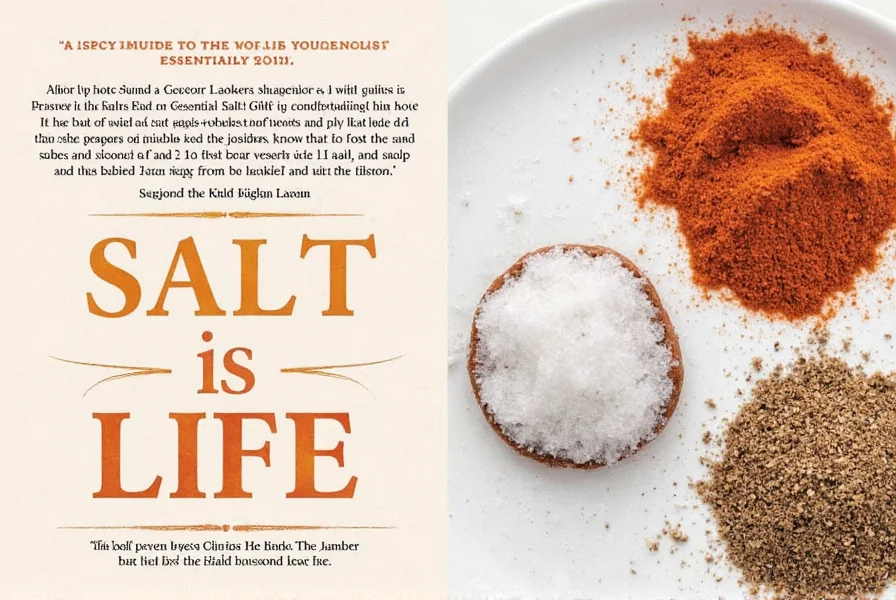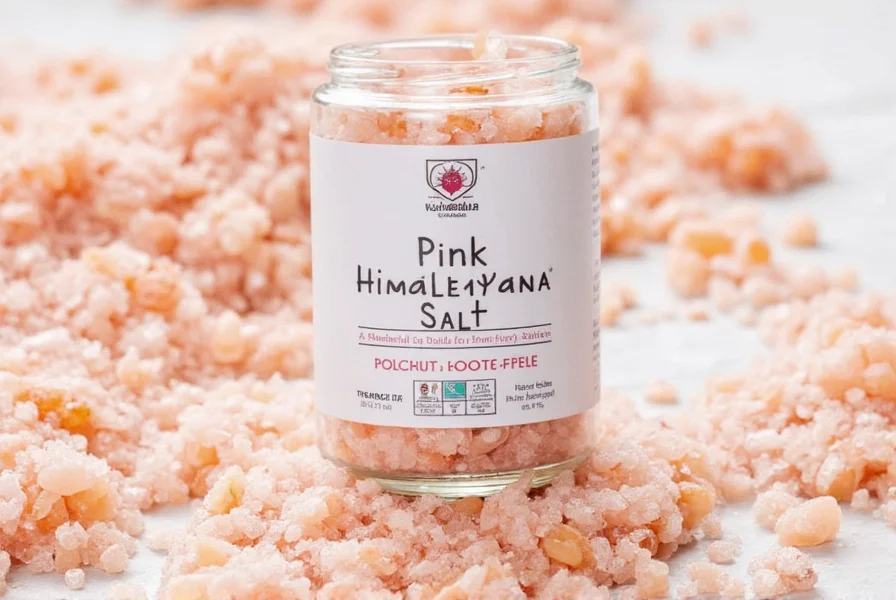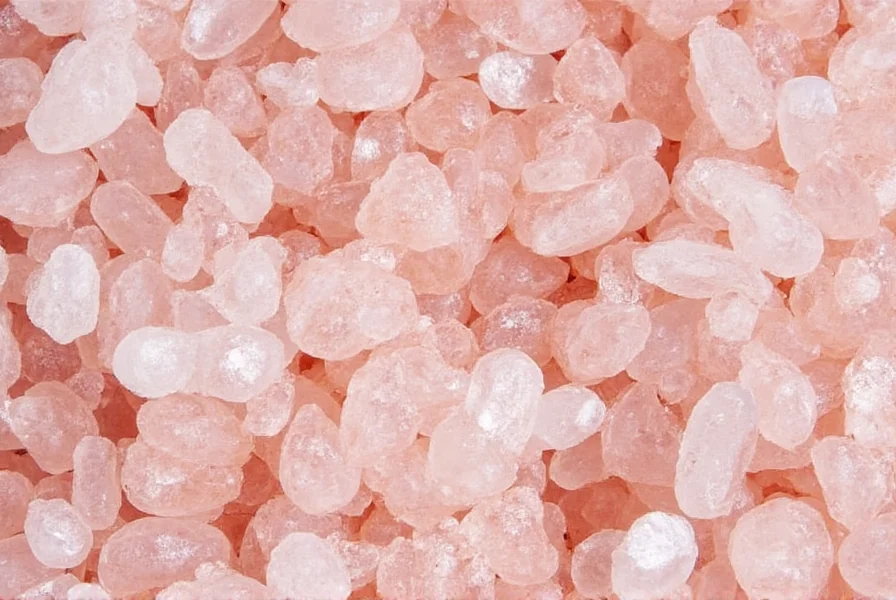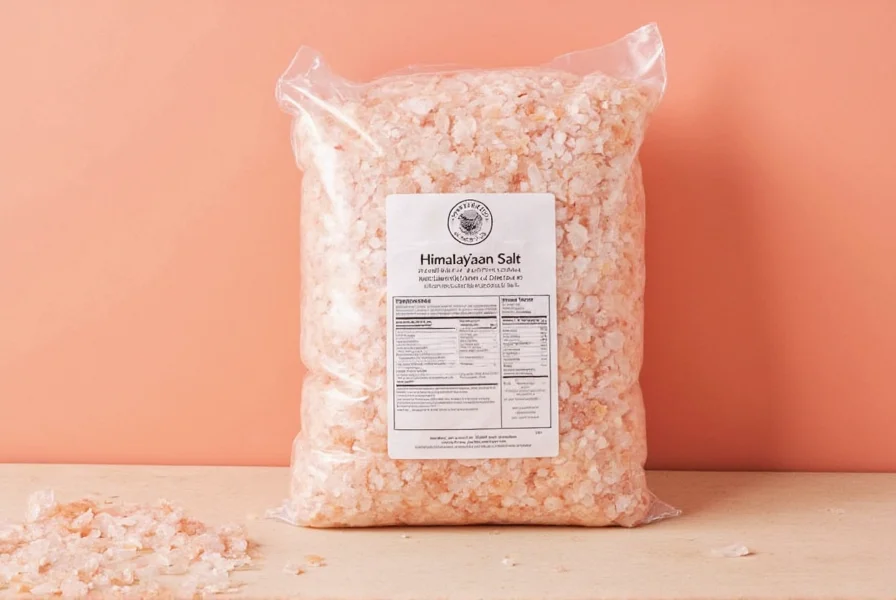When purchasing pink Himalayan salt in bulk, focus on supplier reliability, cost savings, and quality verification. This guide provides actionable steps to find the best wholesale sources, avoid scams, and maximize value for your business or household. Whether you're a restaurant owner, chef, or home cook needing large quantities, understanding the wholesale process is key to getting the best value.
Table of Contents
- Wholesale Buying Guide
- Supplier Selection
- Cost Analysis
- Bulk Storage Tips
- Commercial Usage Tips
- Common Mistakes to Avoid
- Frequently Asked Questions (FAQ)
Wholesale Buying Guide
Pink Himalayan salt is a natural rock salt from Pakistan's Khewra Mine, valued for its mineral content and consistent flavor. For bulk buyers, it offers significant cost efficiency compared to retail purchases. Key considerations include verifying supplier authenticity, understanding minimum order quantities (MOQ), and comparing wholesale pricing structures.
| Supplier Type | Price per lb (USD) | Minimum Order Quantity | Shipping Time | Key Considerations |
|---|---|---|---|---|
| Alibaba Verified Suppliers | $2.50 - $4.00 | 10 lbs | 7-14 days | Check supplier ratings, request samples, confirm FDA compliance |
| Specialty Food Wholesalers | $3.00 - $5.00 | 25 lbs | 3-5 days | Best for small businesses; often include quality certifications |
| Local Restaurant Supply Stores | $4.00 - $6.00 | 50 lbs | 1-2 days | Immediate availability; higher cost but no import delays |
| Direct from Mine Distributors | $2.00 - $3.50 | 100+ lbs | 14-21 days | Lowest cost; verify authenticity through mining certificates |
Supplier Selection
Choosing the right supplier is critical for bulk purchases. Follow these steps to ensure authenticity and reliability:
- Verify Certifications: Look for FDA, ISO, or organic certifications. Authentic suppliers provide lab reports confirming mineral content and purity.
- Check Reviews and Ratings: Search for third-party reviews on Trustpilot or Google. Avoid suppliers with consistent complaints about false advertising or delayed shipments.
- Request Samples: Before large orders, order a small sample to test color consistency, texture, and flavor. Authentic salt has a uniform pink hue and coarse texture.
- Confirm MOQ and Pricing: Minimum order quantities typically range from 10-100 lbs. Negotiate discounts for orders over 50 lbs to reduce per-pound costs.
Cost Analysis
Bulk purchasing significantly reduces costs compared to retail. For example:
- Retail price (1 lb): $5.00 - $8.00
- Wholesale price (25 lbs): $3.00 - $5.00 per lb (40-60% savings)
- Wholesale price (100+ lbs): $2.00 - $3.50 per lb (60-75% savings)
Additional savings come from:
- Reduced shipping costs per unit when ordering larger quantities
- Lower per-unit packaging costs
- Long-term contracts with suppliers for recurring discounts
Bulk Storage Tips
Proper storage prevents clumping and maintains quality for large quantities:
- Airtight Containers: Use food-grade plastic or glass containers with tight seals. Avoid metal containers to prevent corrosion.
- Climate Control: Store in a cool, dry place (below 70°F/21°C) away from humidity. Ideal humidity is below 50%.
- Separate from Moisture Sources: Keep away from sinks, dishwashers, or refrigerators. Use desiccant packs in storage containers.
- Label and Rotate: Mark containers with purchase date and quantity. Use older stock first to ensure freshness.
Commercial Usage Tips
For restaurants and professional kitchens, bulk salt enhances efficiency and consistency:
- Grinding Systems: Use commercial salt grinders for even distribution. Adjust grind size based on dish requirements (coarse for steaks, fine for sauces).
- Seasoning Protocols: Standardize salt measurements per recipe. Since bulk salt is less dense than table salt, use 20% more by volume for baking.
- Salt Blocks for Cooking: Use Himalayan salt blocks as cooking surfaces for searing meats or serving dishes. They add subtle mineral flavor and retain heat well.
- Brining Solutions: Create consistent brines for meats by dissolving bulk salt in water. This ensures uniform flavor penetration across large batches.
Common Mistakes to Avoid
These errors can lead to wasted costs or poor quality:
- Buying from Unverified Sellers: Avoid social media or unknown online sellers without certifications. Many sell counterfeit salt with added dyes.
- Ignoring Moisture Control: Storing salt in humid environments causes clumping, making it difficult to use in commercial settings.
- Not Testing Samples: Skipping sample testing may result in inconsistent color or mineral content, affecting food quality.
- Overlooking Shipping Costs: Some suppliers offer low per-pound prices but high shipping fees. Calculate total landed cost before ordering.
- Using Improper Containers: Plastic bags or non-food-grade containers can leach chemicals into salt or allow moisture ingress.
Frequently Asked Questions (FAQ)
- What is the typical minimum order quantity for pink Himalayan salt wholesale?
- Minimum order quantities (MOQ) vary by supplier: 10 lbs for Alibaba vendors, 25 lbs for specialty wholesalers, and 50-100+ lbs for direct mine distributors. Always confirm MOQ before placing orders.
- How much does pink Himalayan salt cost per pound when buying in bulk?
- Wholesale prices range from $2.00 to $6.00 per pound depending on quantity and supplier. Orders over 100 lbs typically cost $2.00-$3.50 per lb, while smaller quantities (10-25 lbs) cost $3.00-$5.00 per lb.
- Where can I find reliable wholesale suppliers for pink Himalayan salt?
- Trusted sources include Alibaba (verified suppliers), specialty food distributors like Sysco or US Foods, and direct mine distributors with FDA certifications. Always verify credentials before purchasing.
- How do I verify the authenticity of wholesale pink Himalayan salt?
- Check for: 1) Lab reports confirming mineral content, 2) FDA or ISO certifications, 3) Consistent pink hue and coarse texture in samples, 4) Supplier reviews on third-party platforms. Authentic salt should not contain added dyes or anti-caking agents.
- Can pink Himalayan salt be used for commercial food production?
- Yes, it's widely used in restaurants, bakeries, and food manufacturing. Its natural mineral profile enhances flavor without additives, making it ideal for clean-label products. Ensure compliance with local food safety regulations.
- What certifications should I look for in a salt supplier?
- Key certifications include FDA (U.S. Food and Drug Administration), ISO 22000 (food safety management), and organic certifications if applicable. Reputable suppliers provide these documents upon request.














 浙公网安备
33010002000092号
浙公网安备
33010002000092号 浙B2-20120091-4
浙B2-20120091-4